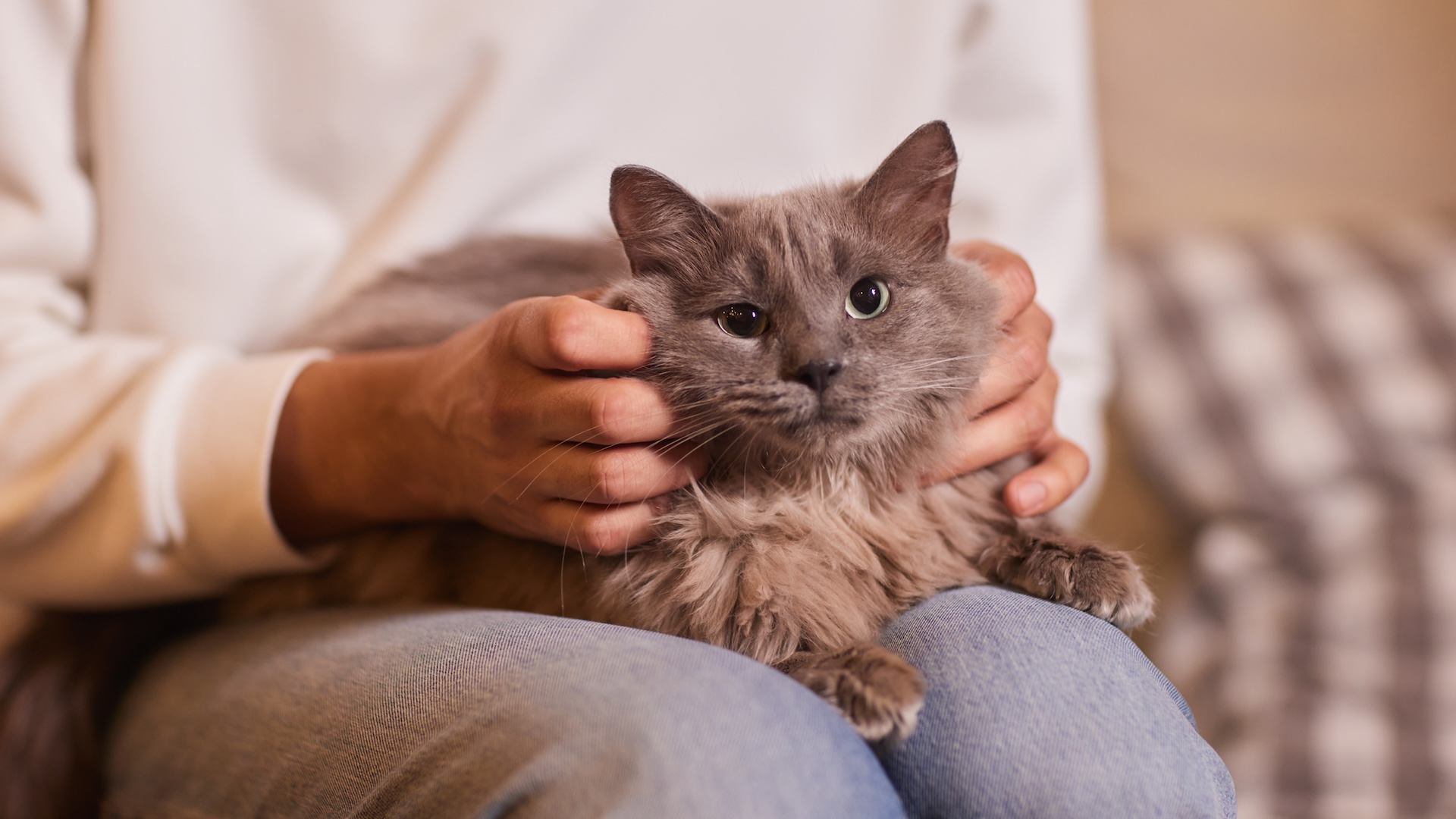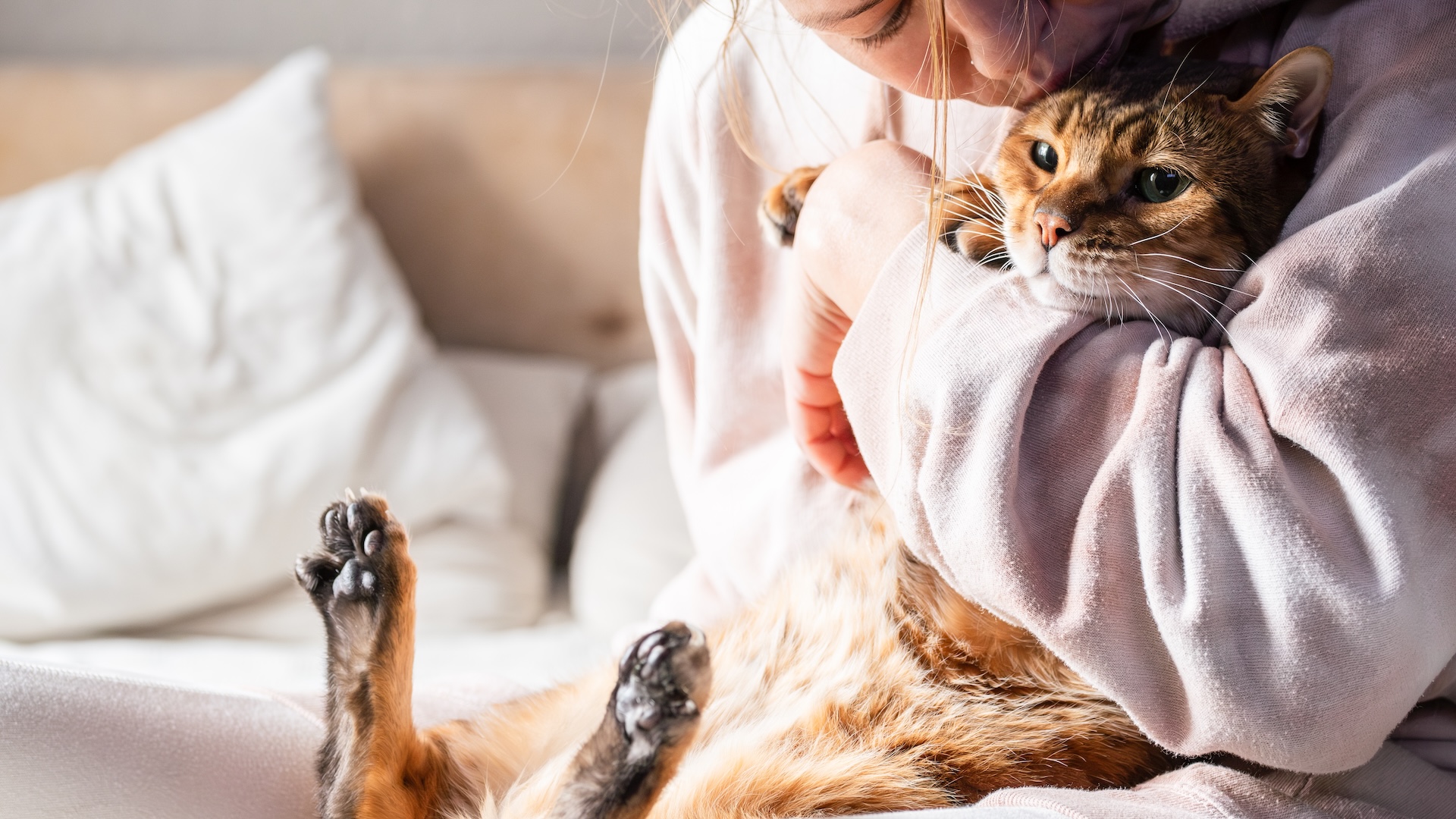Cats may have a reputation for independence, but emerging research suggests we share a unique connection with them — fueled by brain chemistry.
The main chemical involved is oxytocin, often called the love hormone. It’s the same neurochemical that surges when a mother cradles her baby or when friends hug, fostering trust and affection. And now studies are showing oxytocin is important for cat-human bonding too.
Oxytocin also has calming effects in humans and animals, as it suppresses the stress hormone cortisol and activates the parasympathetic nervous system (the rest and digest system) to help the body relax.
Scientists have long known that friendly interactions trigger oxytocin release in both dogs and their owners, creating a mutual feedback loop of bonding. Until recently, though, not much was known about its effect in cats.
Cats are more subtle in showing affection. Yet their owners often report the same warm feelings of companionship and stress relief that dog owners do — and studies are increasingly backing these reports up. Researchers in Japan, for example, reported in 2021 that brief petting sessions with their cats boosted oxytocin levels in many owners.
In that study, women interacted with their cats for a few minutes while scientists measured the owners’ hormone levels. The results suggested that friendly contact (stroking the cat, talking in a gentle tone) was linked to elevated oxytocin in the humans’ saliva, compared with a quiet resting period without their cat.
Many people find petting a purring cat is soothing, and research indicates it’s not just because of the soft fur. The act of petting and even the sound of purring can trigger oxytocin release in our brains. One 2002 study found this oxytocin rush from gentle cat contact helps lower cortisol (our stress hormone), which in turn can reduce blood pressure and even pain.

When is oxytocin released between cats and humans?
Research is pinpointing specific moments that cause the release of this hormone in our cross-species friendship. Gentle physical contact seems to be a prime trigger for cats.
A February 2025 study found that when owners engaged in relaxed petting, cuddling or cradling of their cats, the owners’ oxytocin tended to rise, and so did the cats’ — if the interaction was not forced on the animal.
The researchers monitored oxytocin in cats during 15 minutes of play and cuddling at home with their owner. Securely attached cats who initiated contact such as lap-sitting or nudging showed an oxytocin surge. The more time they spent close to their humans, the greater the boost.
What about less-cuddly felines? The same study noted different patterns in cats with more anxious or aloof attachment styles. Avoidant cats (those who kept their distance) showed no significant oxytocin change, while cats who were anxious (constantly seeking their owner but easily overwhelmed by handling) had high oxytocin to begin with.
Oxytocin of avoidant and anxious cats was found to drop after a forced cuddle. When interactions respect the cat’s comfort, the oxytocin flows — but when a cat feels cornered, the bonding hormone is elusive.
Maybe humans could learn something from their feline friends on managing attachment styles. The key to bonding with a cat is understanding how they communicate.
Unlike dogs, cats don’t rely on prolonged eye contact to bond. Instead, they use more understated signals. The most well known is the slow blink. It’s a feline smile, signaling safety and trust.
Purring also plays a role in bonding with people. The low-frequency rumble of a cat’s purr has been linked not only to healing in cats themselves, but also to calming effects in humans. Listening to purring can lower heart rate and blood pressure; oxytocin mediates these benefits.
The companionship of a cat, reinforced by all those little oxytocin boosts from daily interactions, can serve as a buffer against anxiety and depression — in some cases providing comfort on par with human social support.
Are cats just less loving than dogs?
It’s true that studies generally find stronger oxytocin responses in dog–human interactions. In one widely discussed 2016 experiment, scientists measured oxytocin in pets and owners before and after ten minutes of play. Dogs showed an average 57% spike in oxytocin levels after playtime, whereas cats showed about a 12% increase.
In humans, oxytocin levels rise during meaningful social interactions. Studies show that contact with a loved one produces stronger oxytocin responses than contact with strangers. So, a happy dog greeting is akin to that rush of seeing your child or partner.
Dogs, being pack animals domesticated for constant human companionship, are almost hard-wired to seek eye contact, petting and approval from us — behavior that stimulates oxytocin release in both parties. Cats, however, evolved from more solitary hunters which didn’t need overt social gestures to survive. So, they may not display oxytocin-fueled behaviour as readily or consistently. Instead, cats may reserve their oxytocin-releasing behaviour for when they truly feel safe.
A cat’s trust isn’t automatic; it must be earned. But once given, it is reinforced by the same chemical that bonds human parents, partners and friends.
So, next time your cat blinks slowly from across the sofa or climbs on to your lap for a purr-filled cuddle, know that something invisible is happening too: oxytocin is rising in both your brains, deepening the trust and soothing the stress of daily life. Cats, in their own way, have tapped into the ancient biology of love.
This edited article is republished from The Conversation under a Creative Commons license. Read the original article.

